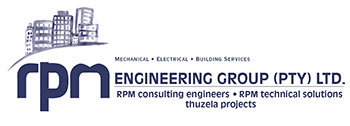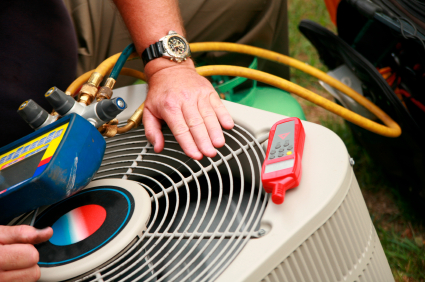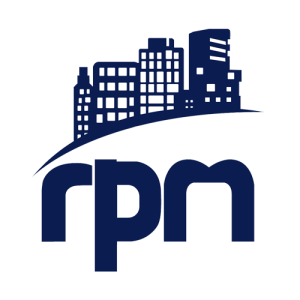Airconditioning Maintenance : Back To The Future By: Patrick Burke (FSAIRAC)
By the time the 1960’s and 70’s had come around, many of the large Institutions owned commercial and Industrial property, lots and lots of it.
The major Banks, Building Societies, Insurance Companies, Pension Fund Administrators, all were investing heavily in property, developing prime land for the building of head offices, regional offices and even retail shopping centres throughout the country. No major city was spared from this rapid development.
It soon became apparent to the new Landlord’s that airconditioning had a major part to play. They also very soon learnt that airconditioning was the most expensive of the building services and of course, the most technically advanced.
This immediately prompted the need for suitably qualified Building Services Engineers, positions they were forced to fill from beyond our shores, the UK, Holland and Germany being the countries of choice.
These imported Airconditioning Engineers took to the new environment like ducks to water. South Africa with its cosmopolitan suburb of Hillbrow, Johannesburg, was a thoroughly nice place to live. A
nd so began an era of professional maintenance, a time of prosperity and learning for the local Airconditioning fraternity.
Many, in fact most of the Institutions chose to employ their own in-house Building Maintenance teams under the control of the newly appointed Chief Building Services Engineer.
The training of maintenance personnel became mandatory so that servicemen and women were able to achieve a meaningful qualification, be it filter cleaner or Building Services technician.
Maintenance procedures were put into place and applied to the letter. Plant was inspected, serviced and monitored by the book, in strict accordance with the manufacturers specification.
Health and safety was paramount, as was housekeeping. You could eat your sandwiches off the plantroom floor. Plantrooms were a picture to behold. Green floors, yellow lines, red borders, proper signage, all this was done to enhance the working environment, giving the distinct impression that a good maintenance regime was in place and it was, make no mistake!
An impressive control room was located within each airconditioning plantroom. These control rooms housed the indication panels necessary to monitor the plant operation. The appointed plant operator was a highly qualified and respected part of the Building Management family.
What then has brought about this earth-shattering change, from that of a well-oiled machine to the absolute shambles we call maintenance today.
Before you shoot me down in flames, please understand that I am of course generalizing. Pockets of professional maintenance excellence do still exist. Nevertheless, the overall situation facing the airconditioning maintenance sector and of course the current Landlords, is grim indeed.
Is it financial? Are the Landlords forsaking their obligations? Are the once prosperous property moguls bailing out to concentrate on their core business? As always, there are more questions than answers to this worrisome trend.
Personally, I believe it’s a combination of all of these factors and possibly a few more I’m unaware of!
Nonetheless, by the mid nineteen eighties, the demise of the in-house maintenance concept was plainly evident. It was almost dead and buried.
With the dawning of the 1990’s, a new interest in commercial property emerged with the listing on the JSE of multiple property portfolios. This was seen as an ideal investment vehicle.
These listed stocks were able to take advantage of the property sell-off initiated by the various Institutions, whereby as a result, a strong and lucrative sector on the local bourse came into being.
Along with the emerging property sector, came a new approach to Building Management. Outsourcing became the buzzword and so the Total Property Management concept was born.
A one stop shop service provider to manage the entire building, from parking to security, to cleaning and rent collection, even the technical services. Maintenance was once again in the spotlight, including that necessary evil, airconditioning. In principal, it seemed a very good concept indeed.
Some property management companies took over the existing in-house maintenance staff, others recruited, largely from the bottom rungs of the ladder. The now unwanted former technical staff formed their own airconditioning maintenance companies, hiring themselves back to those who had recently disposed of their services, the new Landlords, via the management company. Unfortunately, given the very nature of investment markets and the obvious financial vulnerability of the new maintenance contracting ventures, it was the new Landlords who ultimately dictated the service rates allowed to be charged.
The generally lower rate lead directly to a sharp decline in maintenance standards. Notwithstanding every honourable intention, the new contractor was nevertheless in for a hiding second to none. Financial survival was paramount to their continued existence. 3
First to be dispensed with was the specialist sub-contractor, the expert entrusted with the maintenance of major equipment, such as the chillers. The prudent and very necessary annual servicing of this equipment went out of the window. Non-existent or sporadic at best.
Preventative maintenance? What was that all about? This has now been replaced with crisis maintenance. When a piece of machinery finally fails, simply replace it regardless of cost and be quick about it.
The end result, a poorly maintained, totally inefficient, unreliable and costly poor excuse of an airconditioning system. The tragedy of course is that it is rarely the equipment’s fault!
Clearly what is needed now, is a return to good maintenance practice, where routine and more importantly, preventative maintenance once again becomes the norm, rather than the exception.
The property management industry needs to re-introduce the skilled Building Services Engineer, a specialist in his or her field. Only such a person will clearly understand the complexity of large central airconditioning plants and be aware of management’s responsibility to ensuring acceptable conditions throughout their building portfolio.
To my mind anyway, building maintenance should never be viewed as an expensive but necessary evil. It should never be influenced by financial restraints or interpreted as a means to improving the bottom line, simply to appease shareholders.
Avoiding preventative maintenance and even cutting back on general routine maintenance, is a recipe for disaster. You will do so at your own peril. Inevitably, sooner rather than later, the Landlord will be faced, not only with high premature replacement costs, but will end up with unhappy tenants and a building they no longer wish to own.
Planned professional maintenance, whilst initially perceived to be expensive, will in the long run, actually reduce operating costs, including the energy bill, which is now more relevant than ever. Major breakdowns and lengthy interruptions will reduce significantly, resulting in happier tenants, satisfied Landlords and peace of mind for the property management company.
It seems today, that almost everyone directly involved with building management, for some unknown reason, perceives themselves to be airconditioning fundi’s. This is most unfortunate, as it leads to poor decisions and ultimately, financial loss for the Investors and Shareholders.
It is therefore imperative that property management, whether outsourced or in-house, correctly identify key personnel and start employing skilled professionals in the field of airconditioning. The Operations Manager or Technical Services Manager are not generally airconditioning experts, despite their opinion in this regard (my apologies for being cynical).
Once you have such an expert on board, this person will implement a maintenance programme designed to protect the Landlord’s assets, whilst at the same time ensuring a safe and healthy environment for the tenant and their customers alike.
We urgently need to find some middle ground between that of the uncompromising standards of yesterday and the logistical and economic realities of today.
About the Author Pat has been part of the Airconditioning and Refrigeration Industry for an unbroken period of 50 years.
For 33 of these 50 years, he has been directly involved with airconditioning maintenance, the first 10 being hands-on and for the past 20 plus years, consulting on the subject.
As Managing Director of RPM Consulting Engineers, Pat remains a Senior Maintenance Consultant to a number of corporate clients and national chains.




